-
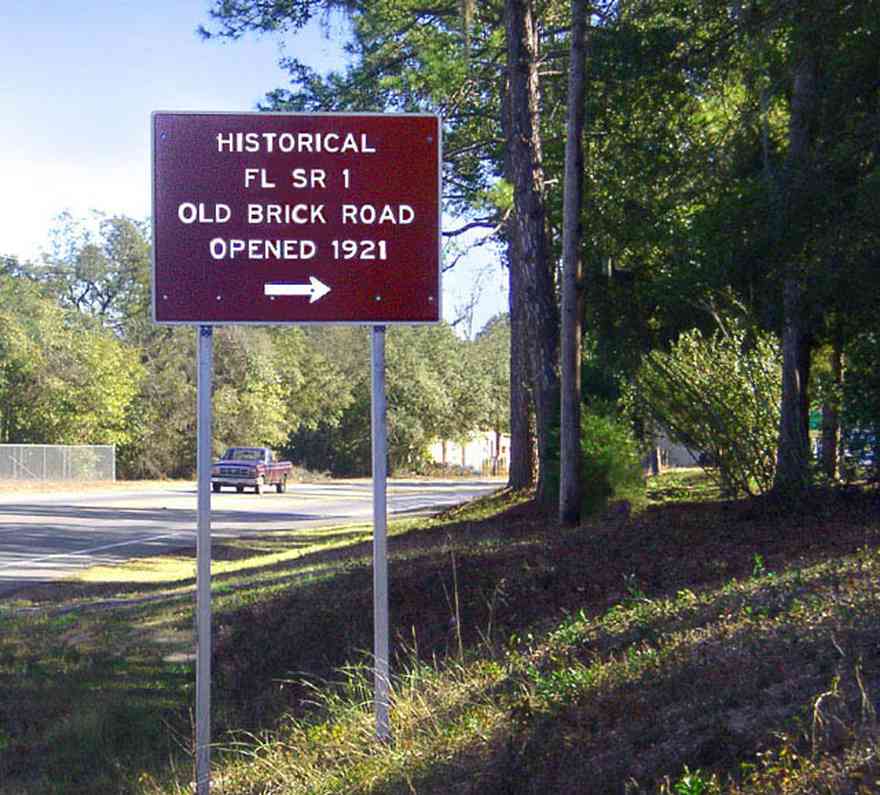
The red brick road can be accessed off Highway 90 on the east side of the Blackwater River.
-
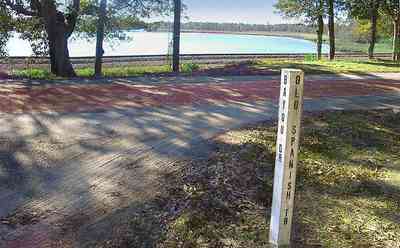
The road is also known as the Old Spanish Trail.
-
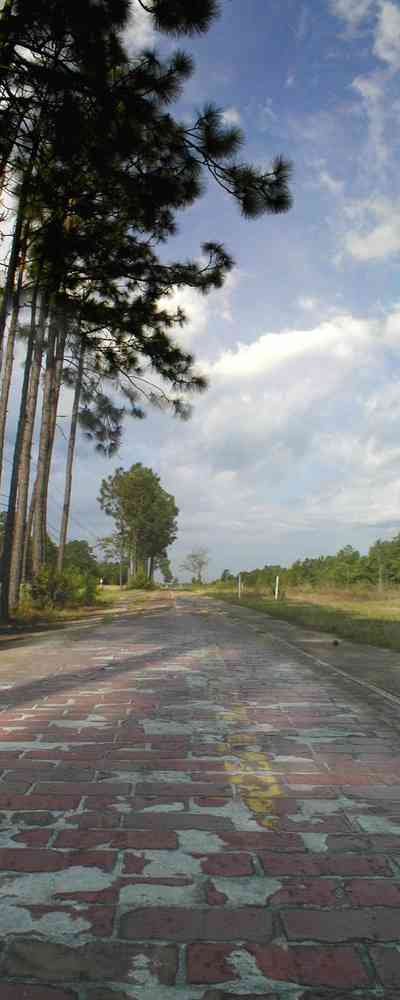
The restored road runs along Highway 90.
-
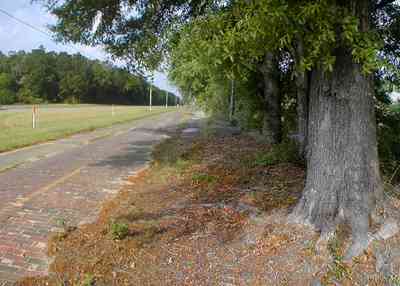
The land on either side of Highway 90 and the Red Brick Road is undeveloped for approximately five miles on the east side of Milton.
-
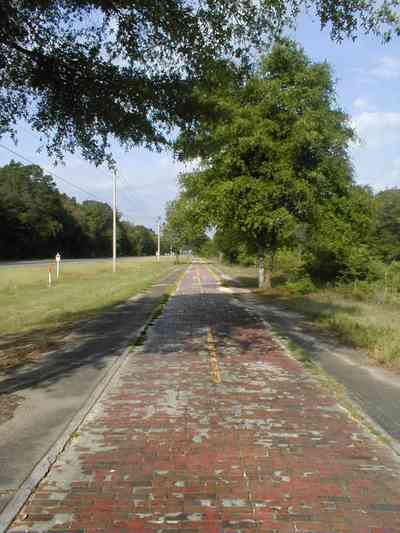
-
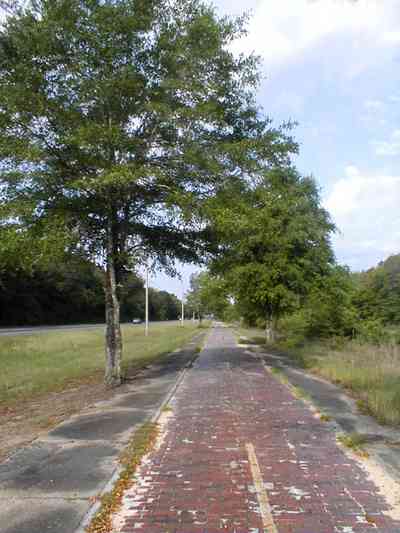
-

Blackwater Bay can be seen from the road.
-
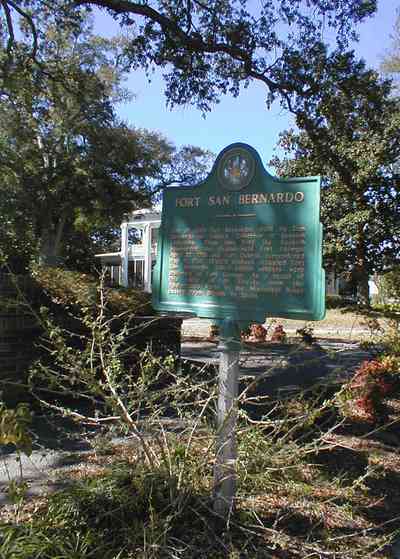
A historic marker at the corner of Spring and Brainard designates the site of Fort San Bernardo which is the highest point in the neighborhood. The fort was built by Don Bernardo de Galvez, Governor of Spanish Louisiana. From this fort the Spanish bombarded the English-held Fort George: April 27, 1781 and Fort George surrendered May 9, 1781. 15,000 soldiers occupied the fort. As a result of the battle all of Florida from the Apalachicola River to the Mississippi River passed from Britian to Spain.
-
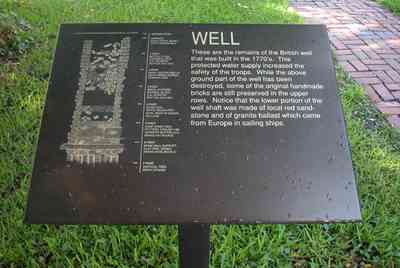
The text of the historical marker reads as follows: These are the remains of the British well that was built in the 1770’s. This protected water supply increased the safety of the troops. While the above ground part of the well has been destroyed, some of the original handmade bricks are still preserved in the upper rows. Notice that the lower portion of the well shaft was made of local red sandstone and of grantite ballast which came from Europe in sailing ships.
-
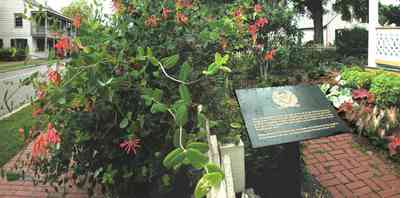
The Marker was placed by Don Tristan de Luna Chapter of the National Society, Daughters of the American Colonists, and Historic Pensacola Preservation Board, 1992. The text of the marker reads as follows: The Lear-Rocheblave House was built on the site of the British Government House of the 1770’s. Built by John and Kate Lear, the house was purchased in 1897 by Benito Rocheblave, a local tug boat captain. The Rocheblave family has long been part of West Florida’s historical tradition, having settled in Colonial Spanish Florida around 1817.
-

The plaque is located on the front of the church on the right side of the door.
-

The plaque is located on the front of the church on the right side of the door.
-
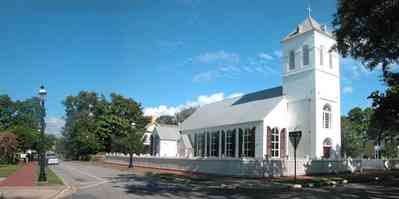
The church does not have a clear style since it has evolved over time. It has been described as Gothic. In 1832, the church was built for $4,500.00. In the late 1990’s the Historic Pnesacola Preservation Board spend $800,000.00 to rehabilitate the church.
-
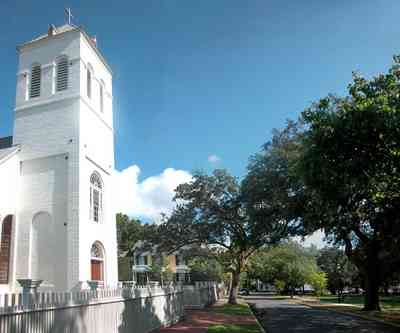
Originally the building was slicked with a white-colored lime wash to support the weak bake-fired bricks with which it was constructed.
-
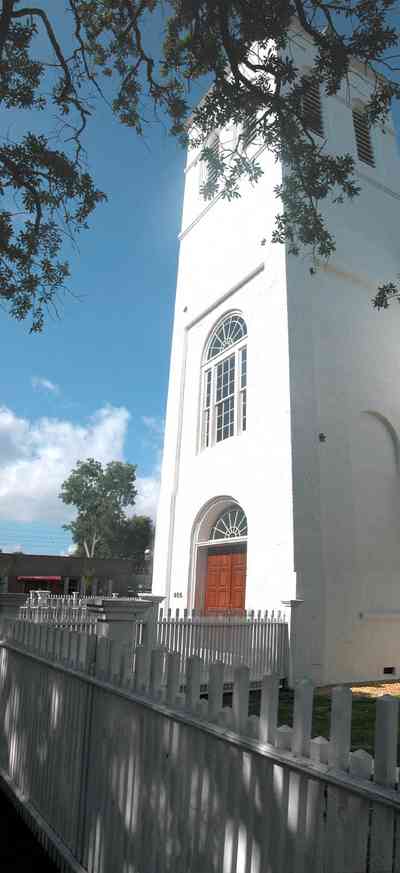
For a brief while during the Civil War, the entire congregation of Old Christ Church along with all but about 80 of Pensacola’s population, fled to Alabama. During their absence, Union troops occupied the church and used it as a hospital and barracks.
-
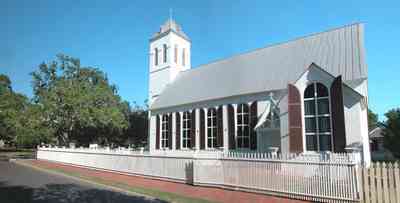
This is a north view from the vantage point of Church Street.
-
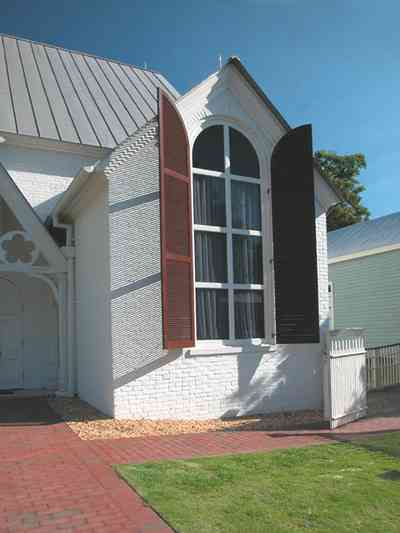
Today the building is at the center of Historic Pensacola Village to be used for concerts, recitals, lectures, adn weddings as well as a community town hall.
-

The south side of the church is on Zaragoza Street.
-
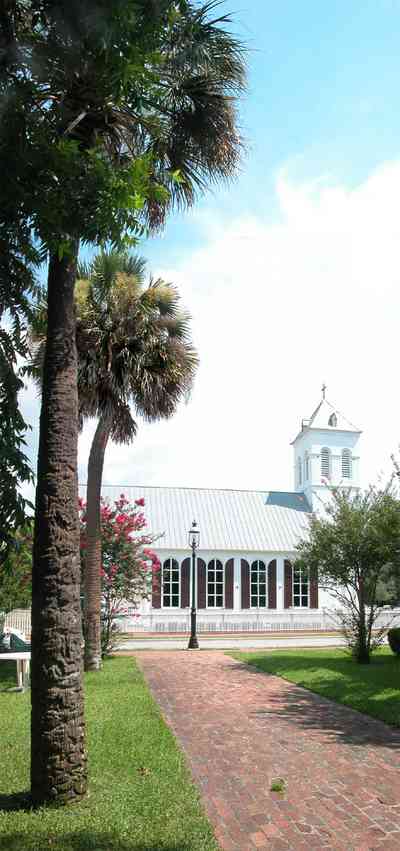
The Christ Church Episcopal parishioners moved into a new church on north Palafox in 1903. The Episcopal Bishop of Florida deconsecrated the building 1935. The building served as the first public library until 1959. Between 1959 and 1995, Pensacola Historical Museum based itself in the bulding, but by 1995 the church had again fallen into disrepair. In 1995, the city voted to return the deed to Old Christ Church vestry who in turn leased it to Historic Pensacola to make it eligible for state grants to fund the necessary repairs.
-
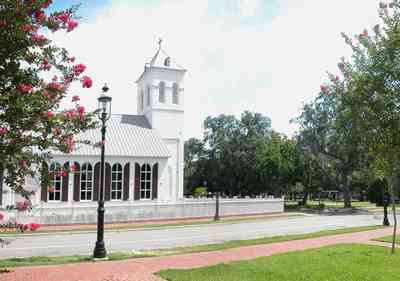
Old Christ Church is situated on the corner of Adams and Zaragoza Street across from Seville Square, as can be seen in the photograph.
-
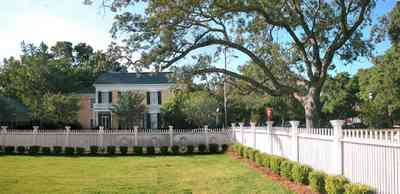
The Dorr House can be seen across the front lawn.

 The red brick road can be accessed off Highway 90 on the east side of the Blackwater River.
The red brick road can be accessed off Highway 90 on the east side of the Blackwater River. The road is also known as the Old Spanish Trail.
The road is also known as the Old Spanish Trail. The restored road runs along Highway 90.
The restored road runs along Highway 90. The land on either side of Highway 90 and the Red Brick Road is undeveloped for approximately five miles on the east side of Milton.
The land on either side of Highway 90 and the Red Brick Road is undeveloped for approximately five miles on the east side of Milton.

 Blackwater Bay can be seen from the road.
Blackwater Bay can be seen from the road. A historic marker at the corner of Spring and Brainard designates the site of Fort San Bernardo which is the highest point in the neighborhood. The fort was built by Don Bernardo de Galvez, Governor of Spanish Louisiana. From this fort the Spanish bombarded the English-held Fort George: April 27, 1781 and Fort George surrendered May 9, 1781. 15,000 soldiers occupied the fort. As a result of the battle all of Florida from the Apalachicola River to the Mississippi River passed from Britian to Spain.
A historic marker at the corner of Spring and Brainard designates the site of Fort San Bernardo which is the highest point in the neighborhood. The fort was built by Don Bernardo de Galvez, Governor of Spanish Louisiana. From this fort the Spanish bombarded the English-held Fort George: April 27, 1781 and Fort George surrendered May 9, 1781. 15,000 soldiers occupied the fort. As a result of the battle all of Florida from the Apalachicola River to the Mississippi River passed from Britian to Spain. The text of the historical marker reads as follows: These are the remains of the British well that was built in the 1770’s. This protected water supply increased the safety of the troops. While the above ground part of the well has been destroyed, some of the original handmade bricks are still preserved in the upper rows. Notice that the lower portion of the well shaft was made of local red sandstone and of grantite ballast which came from Europe in sailing ships.
The text of the historical marker reads as follows: These are the remains of the British well that was built in the 1770’s. This protected water supply increased the safety of the troops. While the above ground part of the well has been destroyed, some of the original handmade bricks are still preserved in the upper rows. Notice that the lower portion of the well shaft was made of local red sandstone and of grantite ballast which came from Europe in sailing ships. The Marker was placed by Don Tristan de Luna Chapter of the National Society, Daughters of the American Colonists, and Historic Pensacola Preservation Board, 1992. The text of the marker reads as follows: The Lear-Rocheblave House was built on the site of the British Government House of the 1770’s. Built by John and Kate Lear, the house was purchased in 1897 by Benito Rocheblave, a local tug boat captain. The Rocheblave family has long been part of West Florida’s historical tradition, having settled in Colonial Spanish Florida around 1817.
The Marker was placed by Don Tristan de Luna Chapter of the National Society, Daughters of the American Colonists, and Historic Pensacola Preservation Board, 1992. The text of the marker reads as follows: The Lear-Rocheblave House was built on the site of the British Government House of the 1770’s. Built by John and Kate Lear, the house was purchased in 1897 by Benito Rocheblave, a local tug boat captain. The Rocheblave family has long been part of West Florida’s historical tradition, having settled in Colonial Spanish Florida around 1817. The plaque is located on the front of the church on the right side of the door.
The plaque is located on the front of the church on the right side of the door. The plaque is located on the front of the church on the right side of the door.
The plaque is located on the front of the church on the right side of the door. The church does not have a clear style since it has evolved over time. It has been described as Gothic. In 1832, the church was built for $4,500.00. In the late 1990’s the Historic Pnesacola Preservation Board spend $800,000.00 to rehabilitate the church.
The church does not have a clear style since it has evolved over time. It has been described as Gothic. In 1832, the church was built for $4,500.00. In the late 1990’s the Historic Pnesacola Preservation Board spend $800,000.00 to rehabilitate the church. Originally the building was slicked with a white-colored lime wash to support the weak bake-fired bricks with which it was constructed.
Originally the building was slicked with a white-colored lime wash to support the weak bake-fired bricks with which it was constructed. For a brief while during the Civil War, the entire congregation of Old Christ Church along with all but about 80 of Pensacola’s population, fled to Alabama. During their absence, Union troops occupied the church and used it as a hospital and barracks.
For a brief while during the Civil War, the entire congregation of Old Christ Church along with all but about 80 of Pensacola’s population, fled to Alabama. During their absence, Union troops occupied the church and used it as a hospital and barracks. This is a north view from the vantage point of Church Street.
This is a north view from the vantage point of Church Street. Today the building is at the center of Historic Pensacola Village to be used for concerts, recitals, lectures, adn weddings as well as a community town hall.
Today the building is at the center of Historic Pensacola Village to be used for concerts, recitals, lectures, adn weddings as well as a community town hall. The south side of the church is on Zaragoza Street.
The south side of the church is on Zaragoza Street. The Christ Church Episcopal parishioners moved into a new church on north Palafox in 1903. The Episcopal Bishop of Florida deconsecrated the building 1935. The building served as the first public library until 1959. Between 1959 and 1995, Pensacola Historical Museum based itself in the bulding, but by 1995 the church had again fallen into disrepair. In 1995, the city voted to return the deed to Old Christ Church vestry who in turn leased it to Historic Pensacola to make it eligible for state grants to fund the necessary repairs.
The Christ Church Episcopal parishioners moved into a new church on north Palafox in 1903. The Episcopal Bishop of Florida deconsecrated the building 1935. The building served as the first public library until 1959. Between 1959 and 1995, Pensacola Historical Museum based itself in the bulding, but by 1995 the church had again fallen into disrepair. In 1995, the city voted to return the deed to Old Christ Church vestry who in turn leased it to Historic Pensacola to make it eligible for state grants to fund the necessary repairs. Old Christ Church is situated on the corner of Adams and Zaragoza Street across from Seville Square, as can be seen in the photograph.
Old Christ Church is situated on the corner of Adams and Zaragoza Street across from Seville Square, as can be seen in the photograph. The Dorr House can be seen across the front lawn.
The Dorr House can be seen across the front lawn. One Tank of Gas
One Tank of Gas